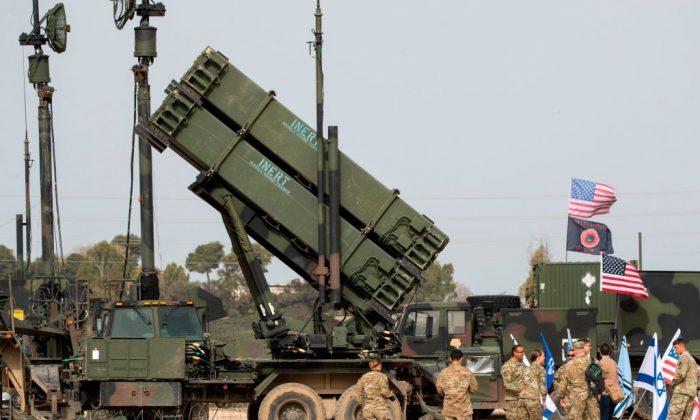The United States currently has no answer to advanced missiles being developed by Russia and China, according to a recent U.S. government report.
It surveyed 45 government organizations about their takes on emerging threats.
The government organizations included the Department of Defense, State Department, Department of Homeland Security, and the Office of the Director of National Intelligence.
The report concluded that there were 26 emerging threats to the United States or its national security interests that may occur in about five or more years.
Hypersonic Weapons
In the area of hypersonic weapons, “China and Russia are pursuing hypersonic weapons because their speed, altitude, and maneuverability may defeat most missile defense systems, and they may be used to improve long-range conventional and nuclear strike capabilities. There are no existing countermeasures,” the report said.Hypersonic missiles can travel at Mach 5 or higher—about one mile per second, or at least five times faster than the speed of sound. Traveling at such high speeds, they are designed to avoid getting intercepted by missiles.
This is not the first time that a U.S. government official or agency has raised concerns about the U.S. military lacking in the ability to counter hypersonic weapons.
Pentagon Undersecretary of Defense for Research and Engineering, Mike Griffin, while speaking at a recent discussion in Arlington, Virginia hosted by the National Defense Industrial Association (NDIA), said that China has tested more hypersonic weapons in the past year than the United States had conducted over the past decade.
Griffin pointed out that different weapons and military systems, such as sensors in space that can detect missiles, would be required to defend against enemy hypersonic weapon attacks.
The U.S. sector is taking notice. Arms manufacturer Lockheed Martin was awarded two contracts by the U.S. Air Force this year—one in April worth $928 million and the second in August for $480 million—to build hypersonic missiles, with the goal of having flying prototypes by 2021, according to Defense News, a website covering the defense sector.
Other Threats from China
China was also named as a specific threat in the arena of cyberspace. In vague terms, the report said China, Russia, and Iran “may engage in advanced information operations campaigns that use social media, artificial intelligence, and data analytics to undermine the United States and its allies.”In addition, China was expanding its geopolitical influence in ways that would “challenge U.S. access to air, space, cyberspace, and maritime domains,” the report stated.
Since 2013, Beijing has invested in infrastructure projects throughout Southeast Asia, Africa, Europe, and Latin America, in an effort to build up trade routes—and political clout—under the One Belt, One Road (OBOR, also known as Belt and Road) initiative.
The GAO report also listed several threats related to dual-use technologies—those that can be developed for both military and civilian uses. One such example was IoT (internet of things), or electronic devices that can connect to the internet. “Adversaries could also disrupt IoT-enabled critical infrastructure and devices,” the report stated.
Chinese tech firms are collaborating with the Chinese military and government agencies in order to develop technology with defense and mass surveillance capabilities.
Another dual-use technology is quantum information science.
“Quantum communications could enable adversaries to develop secure communications that U.S. personnel would not be able to intercept or decrypt. Quantum computing may allow adversaries to decrypt information, which could enable them to target U.S. personnel and military operations,” according to the GAO report.
Beijing’s ambitions in developing quantum computing was stated in its economic blueprint, “Made in China 2025,” and its 13th Five-Year Plan (2016–2020).






Friends Read Free